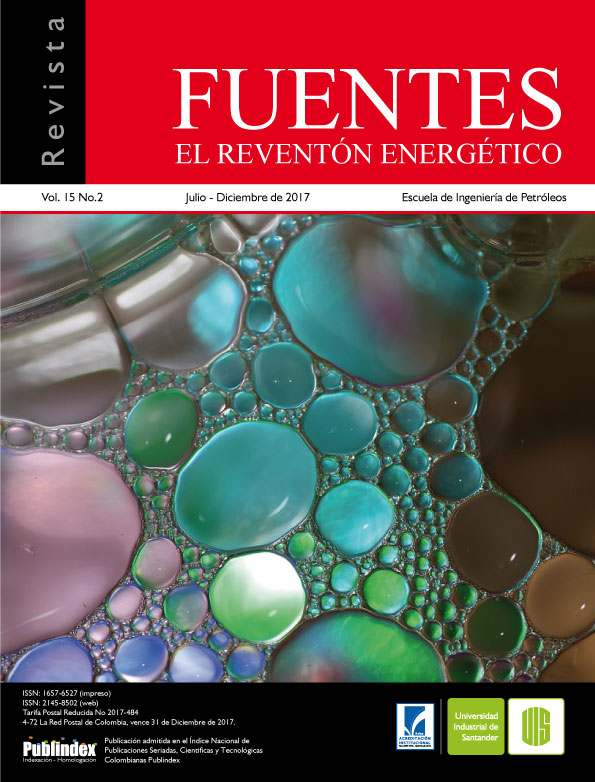The pipeline transportation of heavy oil by using the dilution method: A practical approach for modelling pressure drop and asphaltenes precipitation
Published 2017-12-15
Keywords
- Heavy Oil,
- Dilution Method,
- Fluid Mechanics,
- Asphaltene Precipitation
How to Cite
Abstract
Heavy oil has serious problems to be transported by pipelines without an efficient reduction of the viscosity, thus, some methods have been used in order to make this oil flows easily. In this case blending the heavy oil with other lighter hydrocarbon can result in an optimal viscosity, which depends on the dilution concentration, flow rate, densities, and viscosities of the basic fluids. This work was performed on heavy oil (14.1 API) which is produced and transported by ECOPETROL S.A. in the Mansoya Oil field located in Colombia. This oil has a high viscosity and asphaltene content; as a result, it is hard to displace it through a pipeline that has a length about 35,7 Km because of its physical-chemistry properties, and the element technics available at the survey zone. Due to its viscosity, this study consists on applying the dilution method to get a decreasing of viscosity when the heavy oil is mixed with other light hydrocarbons or diluents. To make this analysis was necessary lab tests to obtain the API gravity and the viscosity regarding to the Mansoya Oil and its mixtures using 3 diluents. Once the experimental data of the mixtures is generated, consequently, by means of the simulators use, the fluid mechanic behaviour into the pipeline is predicted, additionally, the asphaltene precipitation that can take place for various mixtures and diluents respectively is modeled as well. Afterwards, with those simulations, the best concentration in volume for Mansoya Oil is selected for each diluent where the technics requirements are achieved.
Downloads
References
2. Escojido, D., Urribarri, O. & Gonzalez, J. (October 1991). Part 1: Transportation of Heavy Crude Oil and Natural Bitumen. 13th World Petroleum Congress. Buenos Aires: World Petroleum Congress.
3. Goodreau, M. (2016). Modeling Heavy Oils.PSIG Annual Meeting. Vancouver. Pipeline Simulation Interest Group.
4. Guevara E., Ninez, G. & Gonzalez, J. (October1997). Highly Viscous Oil Transportation Methods in the Venezuelan Oil Industry. 15th World Petroleum Congress. Beijing: World Petroleum Congress.
5. Kohse B. F., Nghiem, L. X., Maeda, H., Onho, K. (October 2000). Modelling Phase Behaviour Including the Effect of Pressure and Temperature on Asphaltene Precipitation.
SPE Asia Pacific Oil and Gas Conference and Exhibition. Brisbane: Society of Petroleum Engineers. doi: 10.2118/64465-MS.
6. McIvor, D. (15 de June de 2011). Opportunities in Colombia’s Extensive Heavy Oil Play Continue to Grow. Source: IHS Markit: http://news.ihsmarkit.com/press-release/energy-power/opportunities-colombias-extensive-heavy-oilplay-continue-grow-says-ihs-r.
7. Georgie, W. J. & Smith, P. C.(2012). The Challenges in Processing Heavy Oil. SPE Heavy Oil Conference Canada. Calgary: Society of Petroleum Engineers. doi:10.2118/157894-MS.
8. Yarranton H. ( June 2000). Asphaltene Deposition. Canadian International Petroleum Conference. Calgary: Petroleum Society of Canada.doi: 10.2118/2000-099-EA.
